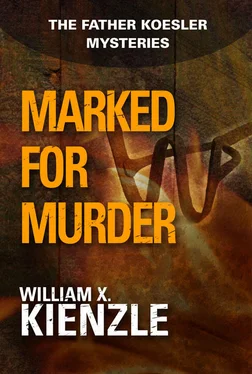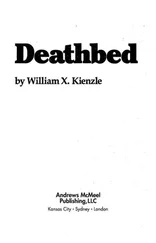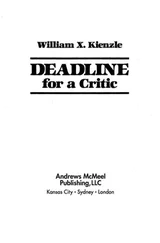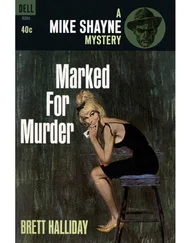Koesler wondered whether, in this instance, familiarity bred tranquility. He was getting more used to the pictures and, as a consequence, was able to study them more intently. “Did you use the word ‘ritual,’ Doctor?”
“Yah. I’ve not seen people ripped open like this after death.”
“That happened after the women were dead?”
“Yah, after death. That immediately makes it a ritual.”
“You mean the evisceration?”
“No, the whole thing. The strangulation, the cross, the evisceration. This combination—that is what makes it a ritual.”
“And you’ve never seen anything like this before.”
“Well, not exactly. I’ve seen people with tic-tac-toe on them.”
Koesler’s mouth dropped open. “Tic-tac-toe? You mean with X’s and O’s? Somebody played tic-tac-toe on a person’s skin?”
“Yah. With a sharp object. A knife, a screwdriver, something like that. People do strange things.”
“I should say.”
“Sometime back, maybe you remember, we had a series of prostitutes who were murdered on Cass Corridor. He used—I don’t recall what it was—but it was something plaited, about this wide. . . .” Moellmann raised his right hand, fingers indicating a span of a couple of inches. “It was black . . .”He tried to recall how it was he knew its color. “. . . because I had it eventually. He left it— I don’t know—or they found it on somebody. Maybe somebody came in and caught him and he just ran and left the victim with this thing. But all the other victims had this plaited imprint on the skin and we would see the body and we would say, ‘Oh, that’s another one of those.’ There were four or five of those.
“But you see, that’s what I would say when they brought in one of these. The first body, I knew it was a ritual. And I knew there would be more.”
“You did?”
“Of course. There was no reason to perform such an elaborate ritual just once. I knew I would see it again. The only question was, how many times. If Lieutenant Tully is correct and if . . . uh . . . Kramer stays in jail, this will be all.”
Koesler prayed the murders were finished. He rejected the hypothesis that they were over because Kramer was locked up. But he had to admit that among all those close to the investigation, he stood virtually alone in believing in Kramer’s innocence.
But believe he did. So he had to get on with it.
“Then, these marks, Doctor . . .” Koesler directed Moellmann’s attention to one of the photos. “. . . around the neck of the victim. These are marks of a plaited object?”
“No. No, that was the weapon in the other cases I just told you about.”
Koesler surmised that patience was not Moellmann’s long suit. He was fleetingly thankful that he’d never had the doctor as a teacher.
“See?” Moellmann continued. “There are the marks of a belt, though not a very ordinary belt. See, the indentations—there, on the skin. I’ll show you. Press your fingers against your wrist. Hard, a lot of pressure. See, it is blanched. If you do it hard enough, it will stay. See what I’m talking about? See how fast it goes away now when you take your fingers away. That’s because the blood goes back in. But if the person is deceased and the belt stays on the neck—he doesn’t remove it; he leaves it on there—then, when I remove the belt, it will be pale all around. I’ll be able to tell you the width of the belt because the upper and lower edges of the belt will scrape the skin. As you can see, the instrument used here—the belt—is rather wider than the ordinary belt.”
Koesler, looking carefully, could detect nothing outstandingly unusual about the mark on the victim’s neck. On the other hand, this was the first time he had ever studied the body of a strangled person. He decided to give the benefit of any doubt to Dr. Moellmann’s expertise.
He looked away from the photo to find Moellmann studying him. “Are these pictures disturbing you, Father?”
“Well, I couldn’t say they qualify as light morning viewing. And I may pay with a few nightmares. But, all in all, no; I’m all right.”
“Good.” Was it Koesler’s imagination, or did Moellmann seem disappointed? “This, here, the branding mark, should be the final thing that interests you.” He began rummaging through the photos, in search of blow-ups of each victim. He found them and set them side-by-side before the priest. “See, these are shots of the left breast of each of the women—magnified, of course. You can see clearly the form of a cross burned into the flesh.”
“This happened after they were dead?”
“Oh, yes, of course.”
Thank God, Koesler breathed.
“Now, you see, these are the first two victims. There is some form of lettering on the horizontal bar of the cross. Here is a closeup of just the lettering. Here is a magnifying glass. Look.”
Koesler looked. The marks meant nothing to him.
“They don’t mean much, do they?”
“No.”
“For a time—well, for the first couple of weeks—we thought the marks might be the top part of some letters. And that the reason the bottom part of the letters was not imprinted was because of the natural curvature of the breast. See, the top of the vertical bar is the strongest, deepest imprint. So, what the guy did was start there at the top and sort of rolled the iron downward. See, the bottom of the vertical bar is the weakest imprint. We reasoned he was not putting as much pressure on the iron as he rolled it down the woman’s breast. Maybe a difficult angle or something.
“But then, with the third victim, we were in luck. This time he was able to exert pretty much equal pressure during the whole process. See, now on the third one, the marks don’t fade out at the bottom. They are etched clearly and definitively. But, sad to say,” Moellmann turned both palms up, “they still seem to mean nothing. Just gibberish.”
Koesler studied most intently the brand on the third victim.
Without doubt, there was a greater clarity. Still he could not glean any meaning from them. The longer Koesler studied the marks, the more certain he was that they were letters—the topmost portion of letters. The hypothesis, after the first two murders, that this was some sort of truncated lettering, certainly seemed accurate. But the branding of the third victim contradicted that theory. There was no gradual fade-out of the letters nor of the bottom of the vertical beam. The marks were crisp and clean. But why would someone go to all that trouble just to leave a mark that was impossible to fathom? Was it some sort of code? There must be some explanation of all this. But what could it be?
As he drifted back to the present, Koesler noticed that Moellmann was gathering the photos, notes, and charts and returning each to its proper folder. The show was over; the time Moellmann had allocated for this exhibition was up.
Koesler rose and gathered his coat and hat. “Thank you very much, Doctor. It was very kind of you to give me so much time.”
“This came to you through the courtesy of Inspector Koznicki. And now, Father, you know about as much as the police. Much of what I showed you is very confidential.” The statement was delivered as a warning.
“I’m good at keeping secrets, Doctor.”
“You know, don’t you, that Father Kramer has a workbench with appropriate tools so that he could easily have fashioned this branding iron?”
“Yes, I know that, Doctor.”
“And still you think he is innocent?”
“Yes.”
Moellmann shook his head. “One last thing: Did those markings mean anything at all to you?”
“Not really. Although the longer I reflect on it, the more they remind me of something. But I can’t think what. It may come to me—probably in the middle of Mass or a shower, or shoveling snow.”
Читать дальше












